Troubleshooting PC Speakers: A Comprehensive Guide
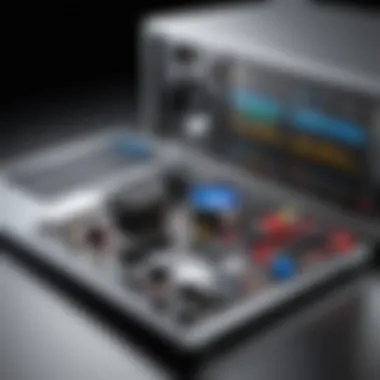
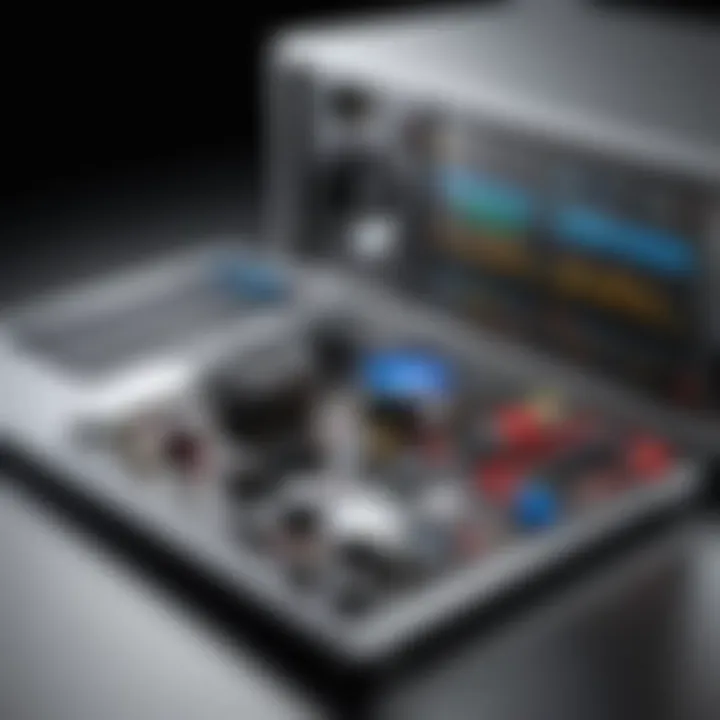
Intro
PC speakers serve as a vital interface between users and their digital experiences. Sound quality can significantly enhance activities such as gaming, music listening, or video conferencing. Yet, many faced issues with speakers that do not function as expected. A nuanced understanding of both hardware and software related to sound output can empower users to diagnose issues effectively and implement solutions.
This guide explores common problems with PC speakers, offering systematic troubleshooting steps. Readers will gain essential insights into underlying causes and potential fixes. By emphasizing clarity and depth, the goal is to equip users with the necessary tools for resolving speaker-related challenges. Ultimately, an informed approach to troubleshooting can lead to a more enjoyable computing experience.
Understanding PC Speaker Functionality
Understanding how PC speakers function is crucial when addressing audio issues. Speakers serve as the primary output device for sound, enhancing the user experience across various activities, from gaming to multimedia consumption. If speakers are not functioning well, it can significantly affect the overall performance of a PC.
The Role of Speakers in PC Audio
Speakers translate electrical signals from the computer into audible sound. They play a vital role in creating a complete audio experience. The quality of sound affects clarity in communication, entertainment, and even productivity during tasks that require focus. Without proper speaker functionality, users may miss critical audio cues, leading to frustration.
Types of PC Speakers
Several types of PC speakers cater to different needs and preferences. Each type has its unique features and advantages, appealing to diverse user requirements.
Stereo Speakers
Stereo speakers are the most common type found in many households. They typically consist of two speakers placed on either side of the PC, providing a two-channel audio output. One key characteristic is their ability to create a more immersive sound experience by separating audio between the left and right channels. This stereo separation enhances the listener's experience in games and music, making it a popular choice within this article's context.
While stereo speakers are widely accepted, they often lack the depth provided by more complex systems. They are simple to set up and do not require elaborate arrangements. However, listeners seeking a more enveloping sound experience might find stereo speakers lacking compared to surround sound setups.
Surround Sound Systems
Surround sound systems offer a more intricate audio experience. Designed to envelop the listener with sound from multiple directions, they typically include several speakers placed around the room. The primary characteristic of surround sound systems is their ability to provide a multi-channel audio experience, which is particularly beneficial for gaming and movie watching.
This system can create a lifelike audio environment, making it a preferred option for those who prioritize sound depth. However, setting up such a system can be complex. Users must consider speaker placement for optimal performance, which might not be suitable for everyone.
USB Speakers
USB speakers are designed for ease and convenience. They connect directly to a computer via USB ports, making them simple to install and use. A defining feature of USB speakers is their plug-and-play functionality, allowing users to quickly set up their audio output. This simplicity appeals to less tech-savvy individuals and those who prefer quick solutions.
However, USB speakers often lack the audio quality offered by larger systems. While they are great for casual listening, users looking for high-fidelity sound may need to explore other options. They are ideal for compact setups or for those who need speakers for basic functions.
As audio fidelity and speaker type are critical considerations when troubleshooting, knowing these aspects helps in determining the best course of action. Understanding the functionality and types of PC speakers informs users about potential issues that may arise and how to address them effectively.
Initial Diagnostics
Initial diagnostics are crucial when addressing issues with PC speakers. This step involves assessing basic functionalities before delving into more complex troubleshooting. Understanding the foundational aspects helps in isolating the problem effectively, which can save time and reduce frustration. By starting with initial diagnostics, one ensures that the problem is not simply a matter of connections or power, which are often overlooked.
It helps in determining whether the issue lies within the speakers themselves, the computer, or in the connections between them. This straightforward approach guides users through the troubleshooting process in a logical manner, avoiding unnecessary complications.
Checking Power Supply
Ensuring the speakers are powered properly is the first step in the diagnostic process. This might seem simple, but it is one of the most common issues encountered. Checking the power supply includes verifying that the power switch is in the 'on' position, the outlet is functional, and the power cable is securely connected. Power issues often manifest as silence—an obvious indicator that something is amiss.
If the speakers are plugged into a surge protector or power strip, it might be wise to test them directly with a wall outlet. This helps to rule out any faults in the power source.
Verifying Connections
Another critical aspect of initial diagnostics involves verifying all connections between the speakers and the computer. Many times, simple disconnections or loose connections can lead to audio issues.
Audio Cables
Audio cables play an essential role in transmitting sound from the PC to the speakers. Examining the audio cables ensures there are no breaks, cuts, or wear. A crucial characteristic of audio cables is their ability to maintain audio quality over distance. High-quality cables, often shielded to reduce interference, help retain signal integrity, making them a beneficial choice in this context.
A unique feature of audio cables is their variety, including TRS, TRRS, and RCA configurations. Each type serves different purposes and devices, highlighting the need for compatibility. A disadvantage could be that lower-quality cables may induce noise or signal loss, thus compromising audio performance.
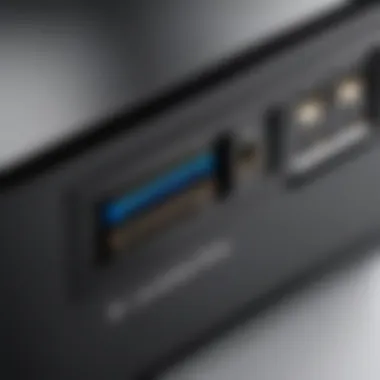
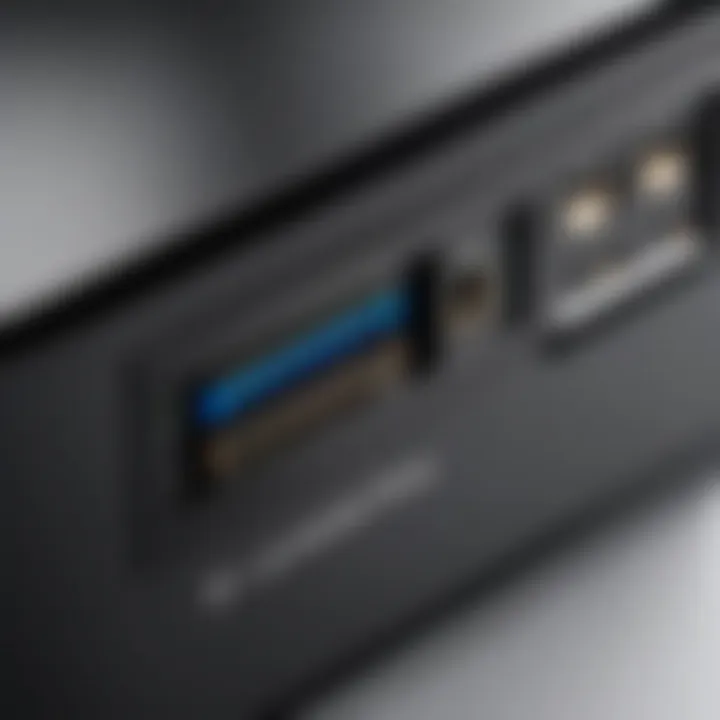
USB Ports
USB ports are increasingly popular for connecting speakers to computers. They provide both power and audio signal through a single connection. This convenience is a key characteristic that simplifies setup processes and reduces cable clutter. USB speakers often have integrated digital-to-analog converters, enhancing sound quality by minimizing data loss during transmission.
However, a disadvantage of relying on USB connections might arise with driver issues. If the system does not recognize the USB speakers due to outdated drivers, it could prevent audio playback entirely. Thus, checking USB ports for functionality and ensuring proper driver installation is essential in the diagnostic process.
Ensuring that both power supply and connections are verified can solve many speaker issues early on.
By following these initial diagnostic steps, one can systematically identify and address common issues with PC speakers before progressing to further, more complex troubleshooting methods.
Software Considerations
Addressing software considerations is an essential part of troubleshooting PC speakers. Often, users neglect the software side, leading to unresolved sound issues. Understanding the relationship between software and hardware can significantly improve troubleshooting outcomes. When speakers don’t work, the first instinct might be to check the physical connections. However, software settings are capable of causing similar issues. This section will guide through specific elements pertaining to software concerns, highlighting their benefits and importance.
Operating System Settings
Sound Settings
Sound settings are a fundamental aspect of audio management in any operating system, especially in Windows and Mac. These settings allow users to adjust volume levels, define spatial sound effects, and manage equalization presets. Typically, the audio output may be unintentionally redirected to a different device.
A key characteristic of sound settings is their user-friendly interface. They provide intuitive sliders and options, making adjustments straightforward. This accessibility is particularly beneficial for users who might lack technical expertise. Furthermore, some operating systems offer advanced sound settings that include options for enhancing audio quality. However, one disadvantage is that inexperienced users might unintentionally alter settings without understanding their impact.
Playback Devices
Playback devices are another significant factor when troubleshooting audio output. Operating system settings provide a list of detected audio devices, allowing users to switch between them easily. This capability is crucial for ensuring that the correct output device is being utilized.
A prominent characteristic of playback devices is the ability to identify multiple devices connected to the system. It enables users to select preferred devices, such as headphones or external speakers with a few clicks. This aspect is beneficial for users who frequently switch devices. However, users may sometimes find that settings revert to default after a computer restart, which can lead to confusion and unresolved audio issues.
Driver Issues
Driver issues play a crucial role in the functioning of PC speakers. Outdated or incompatible drivers can lead to functionality problems, often resulting in no sound at all. Being aware of this is vital in the troubleshooting process, as updating or reinstalling audio drivers can rectify many sound-related issues.
Identifying Outdated Drivers
Identifying outdated drivers is a critical first step in addressing audio problems. Drivers are responsible for facilitating communication between the operating system and audio devices. When these drivers are outdated, conflicts can arise, leading to various performance issues. A key characteristic of identifying outdated drivers is the easy access to driver update utilities provided by many operating systems.
This accessibility makes it simpler to check driver status with minimal effort. Furthermore, using tools like Device Manager can pinpoint problematic drivers quickly. However, one common disadvantage is that users may not always recognize the need for updates, which can result in prolonged frustration with audio problems.
Reinstalling Audio Drivers
Reinstalling audio drivers can serve as a powerful remedy for persistent audio issues. When problems arise that are not resolved through simple updates, a complete reinstallation can reset all configurations associated with audio devices. The unique feature of reinstalling drivers is that it removes any corrupted or misconfigured settings that are causing the problem.
This approach is generally straightforward, as users can remove installed drivers through the operating system's device management tools. It often restores normal functionality and resolves myriad problems. However, one potential downside is that users may need to reinstall specific settings or configurations, which can be an inconvenience for some individuals.
"It's important to realize that both outdated drivers and improper settings can severely hinder sound performance, making thorough checks crucial for adequate troubleshooting."
Overall, each aspect of software considerations plays a vital role in resolving audio issues with PC speakers. Recognizing the significance of sound settings, playback devices, and audio drivers is key to effective troubleshooting.
Testing the Speakers
Testing your PC speakers is a critical step in diagnosing audio issues. It often reveals problems that are not immediately apparent through preliminary checks, such as power or wire connections. By effectively testing the speakers, you can identify the source of the problem and determine whether it lies within the speakers themselves, the computer's audio outputs, or external factors.
One key element of testing is ensuring that the speakers are both receiving power and outputting sound. If sound is present but distorted, it indicates that further inspection of the hardware is necessary. Utilize known functioning equipment to compare sounds, which helps diagnose potential malfunctions.
When troubleshooting speaker issues, it's crucial to isolate variables. This enables clearer insights into the situation, making it easier to identify the root cause of the problem.
Using Built-in Troubleshooters
Most modern operating systems offer built-in troubleshooters that can assist in diagnosing sound and speaker issues. These tools analyze the current setup, initiating automatic tests that can help identify common problems.
To use built-in troubleshooters:
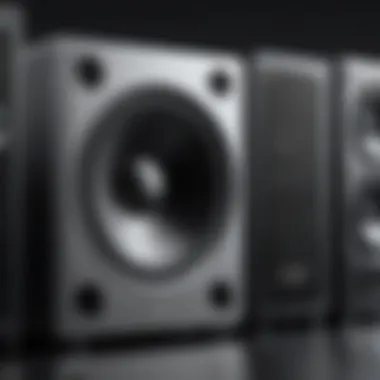
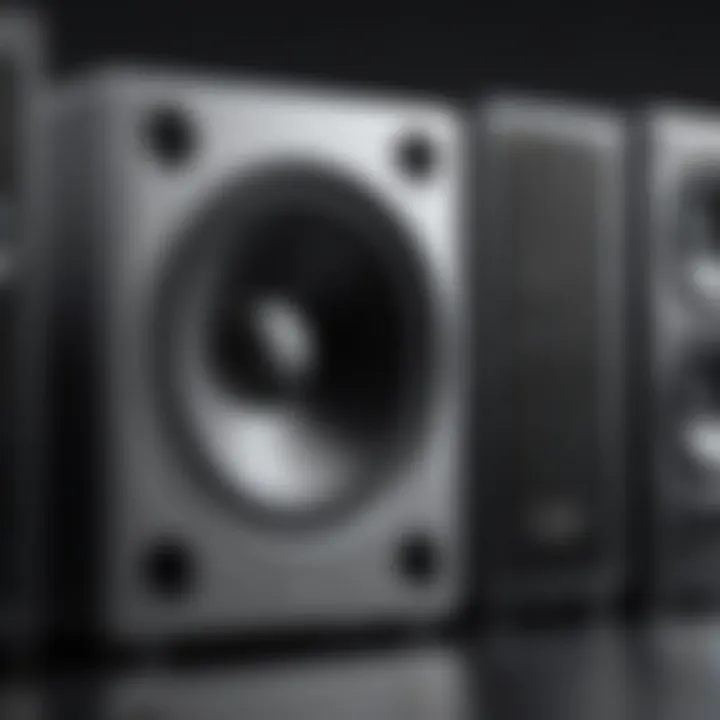
- Access the Troubleshooter: On Windows, you can find the troubleshooter by right-clicking the sound icon in the taskbar and selecting "Troubleshoot sound problems."
- Follow the Prompts: The troubleshooter will guide you through a series of prompts, making it easy even for less technically inclined users. It will check for various issues like muted outputs, hardware malfunctions, or even incorrect playback devices.
- Review Suggestions: Once completed, the troubleshooter will provide suggestions for fixing detected issues, such as changing settings or reinstalling drivers. Keep these suggestions in mind while implementing fixes.
Utilizing built-in troubleshooters is advantageous because they can often fix non-hardware-related issues automatically, saving time and effort.
Playing Sample Audio
After completing initial tests and troubleshooting steps, a practical approach to further assessing speaker functionality is to play sample audio. Using known media files allows for a direct evaluation of the speakers’ performance.
- Select Quality Samples: Choose high-quality audio files to test the speakers effectively. These files should encompass a range of frequencies and sounds, including music genres and sound effects. This enables you to assess not just basic functionality, but also audio fidelity and clarity.
- Volume Levels: Play the samples at various volume levels to observe if the speakers reproduce sound accurately and consistently. Anomalies at high or low volumes can indicate potential degradation or failure in the speaker components.
- Listening Environment: Be mindful of the testing environment. Unwanted ambient noise can interfere with your ability to accurately judge the speaker’s sound quality. It is often best to test in a quiet location to fully appreciate the output quality.
Hardware Troubleshooting
In the realm of audio technology, hardware troubleshooting often becomes a critical component when diagnosing speaker issues. Many times, users find themselves grappling with sound problems stemming from hardware malfunctions rather than software conflicts. Utilizing a hands-on approach can reveal the core of these complications. Addressing hardware elements not only enhances understanding but can lead to more effective solutions. Specific elements such as speaker components must be scrutinized diligently.
Inspecting Speaker Components
Speaker Drivers
Speaker drivers are fundamental in transforming electrical signals into sound. The quality of speaker drivers has a direct impact on audio clarity and volume. Most often, these components are composed of materials that have distinct characteristics, enabling them to reproduce a wide range of frequencies. A significant aspect of speaker drivers is their sensitivity, which determines how well they can convert power into sound output.
The benefit of focusing on speaker drivers is that they can often be the source of low sound quality or even total failure. If a driver is damaged or malfunctioning, it may impair the speaker's performance significantly. One unique feature of some drivers is the inclusion of advanced materials, such as Kevlar or aluminum. These materials can contribute to better sound pressure levels, but sometimes they can lead to increased weight or cost.
Crossover Networks
Crossover networks serve a pivotal role in managing the audio signal delivered to various speaker drivers. They ensure that the correct frequency range reaches each component, thus maintaining sound fidelity. A notable attribute of crossover networks is their capacity to improve sound clarity by filtering out unnecessary frequencies.
The advantage of employing crossover networks in a speaker system is clear; they maximize the efficiency of each driver. However, the complexity of crossover networks can also be a drawback. If not properly designed, they may introduce phase issues or distortions in sound. This makes meticulous design and inspection an essential aspect of troubleshooting.
Testing with Different Devices
Testing the speakers with different devices can provide a wider context for diagnosing issues. Connecting speakers to varied audio sources—like a smartphone, tablet, or another computer—can help isolate the problem. If speakers perform well with one device but not another, it could indicate that the issue lies within the original device’s audio setup or settings.
Taking methodical steps when switching devices is crucial. Connect speakers directly to the audio source without intermediaries, and ensure all connections are secure. This practice yields clarity when assessing performance across devices.
"Understanding the interplay between hardware components is essential for effective troubleshooting of audio issues."
Environmental Factors
Understanding environmental factors is essential when troubleshooting PC speakers. These factors can greatly influence audio quality and speaker performance. Often overlooked, elements such as electrical interference and speaker placement can lead to frustrating audio issues. By addressing these factors, users can optimize their audio experience.
Interference from Other Devices
Electromagnetic interference from other electronic devices can affect sound clarity. Devices such as routers, cordless phones, and even microwaves emit signals that can disrupt audio signals being processed by the speakers.
It is advisable to keep speakers away from these devices to minimize interference. If a buzz or hum is noticeable, this could likely be due to this interference.
To minimize interference, consider these steps:
- Relocate Speakers: Move speakers away from potential interference sources.
- Use Shielded Cables: Invest in good quality, shielded audio cables to reduce the impact of external signals.
- Try Different Outlets: If using speakers that plug into the wall, try different outlets to see if that resolves issues.
"Ensuring proper spatial arrangement can prevent issues caused by electronic interference."
Physical Placement of Speakers
The physical placement of speakers plays a significant role in the overall sound experience. Positioning affects not only how sound is projected but also how it interacts with the room. Poor placement can lead to phase cancellation and undesirable sound distortion.
When setting up speakers, keep the following in mind:
- Distance from Walls: Speakers should not be too close to walls to avoid bass reflections, which can muddy the sound.
- Mounting Height: Ideally, speaker drivers should be at ear level for optimal audio perception.
- Angle Toward Listening Position: Speakers should face the primary listening area. This alignment enhances soundstage and audio clarity.
In summary, taking time to assess the placement and potential interferences can drastically improve audio output from PC speakers. Whether it’s adjusting the location or rearranging the environment, these small changes can lead to a better listening experience.
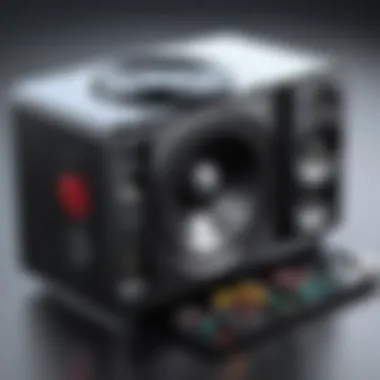
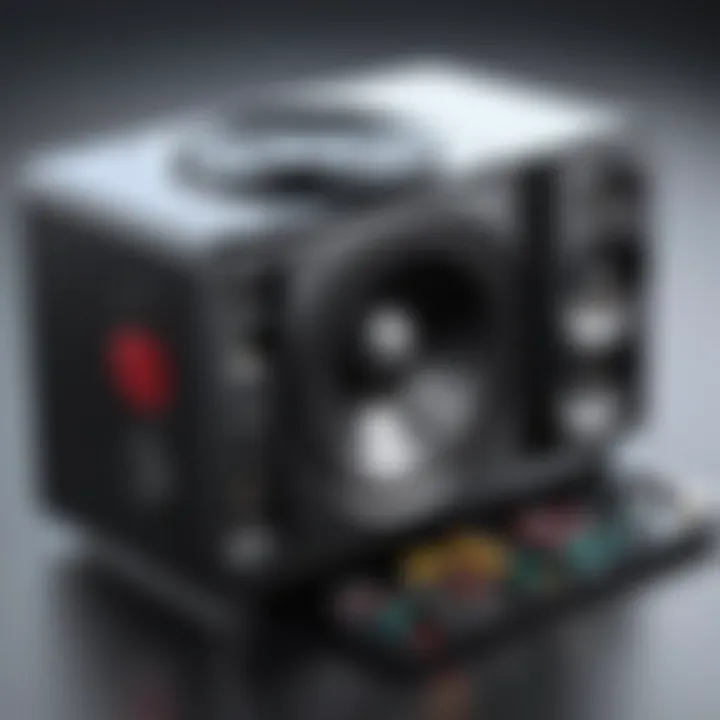
Seeking Professional Help
In the realm of PC audio, troubleshooting speaker issues can sometimes lead to complex challenges that go beyond mere software settings or physical connections. This is where seeking professional help becomes crucial. Consulting a technician ensures that you receive specialized knowledge and experience that can streamline the troubleshooting process and identify issues that may not be easily visible to the user. A technician is equipped with tools and equipment that can diagnose hardware faults effectively.
When considering professional help, it is also vital to evaluate the potential benefits versus costs. While there may be an initial investment in hiring a technician, the long-term benefits can outweigh this, as proper resolution of the problem can save time and prevent further damage to your audio system or PC. Moreover, technicians often provide follow-up services or recommendations for maintaining and optimizing your audio experience.
Additionally, understanding the complexities of modern audio systems requires substantial expertise. Therefore, for individuals who are not deeply versed in technology or sound design, engaging with a professional might be the most efficient route.
When to Consult a Technician
Determining the right time to consult a technician can make a significant difference in how quickly and effectively you resolve your audio issues. Here are some situations when you should consider seeking professional assistance:
- Persistent Issues: If you've gone through the standard troubleshooting steps outlined in this article and the speakers still do not work, it is time to consult a technician. They can provide deeper insights into the problem.
- Physical Damage: If there are visible signs of damage to your speakers or connections, such as frayed wires or dented speaker cones, professional assessment is necessary to avoid further deterioration.
- Unusual Sounds: Distorted or irregular sounds can indicate issues with internal components. A technician can accurately diagnose these problems.
- Unresponsive Speakers: If speakers do not respond at all, either in terms of no audio or no functional indicators (like lights), this could point to a major fault that requires specialized attention.
By recognizing these signs early, you can avoid wasting time and resources on ineffective troubleshooting methods.
Warranty Considerations
When facing issues with your PC speakers, understanding warranty terms is essential. Many manufacturers provide warranties that cover repairs or replacements for faulty devices. Here are some points to keep in mind:
- Check Warranty Eligibility: Before pursuing repairs, check if your speakers are still under warranty. This can save you costs associated with professional help.
- Manufacturer Requirements: Some manufacturers require that you use authorized technicians for repairs to maintain warranty validity. Failing to do so could void your warranty.
- Documentation: Keep records of purchase receipts and any communications with the manufacturer. This can expedite claim processes and service requests.
- Time Limits: Be aware of any time frames mentioned in the warranty for reporting issues or claiming services. Delays could affect your ability to receive benefits.
In summary, understanding the warranty can offer financial support in resolving issues related to your speakers. Engage with professionals as necessary, and always refer back to your warranty details to ensure you make the most informed decisions regarding repairs.
Preventive Measures
Understanding the elements of preventive measures can be crucial in ensuring the longevity and functionality of PC speakers. By implementing a series of best practices, users can significantly reduce the risk of encountering audio issues in the future. Preventive measures not only safeguard against potential problems but also enhance overall performance. Knowing how to properly maintain and use technology can lead to a more enjoyable experience.
Regular Maintenance of Audio Hardware
Regular maintenance of audio hardware is essential for preventing deterioration. Dust accumulation can have adverse effects on speaker performance. Every few months, it is advisable to clean the speakers carefully. This involves using a soft cloth to wipe down the exterior surfaces and using a low-powered vacuum cleaner to remove any dust that may have gathered in the grilles.
Furthermore, checking and securing cable connections is crucial. Loose wires can lead to interruptions in sound, which may be mistaken for a broken speaker. Ensuring that all connections are tight can save time and frustration later.
To ensure optimal sound quality, perform routine tests with different audio sources. Playing tracks of various genres can highlight any shortcomings in speaker performance that might go unnoticed during regular use. Keeping a log of these performance evaluations can help track down consistent issues that may arise over time.
Updating Software Regularly
Regular software updates are equally important for the proper functioning of PC speakers. Outdated drivers can contribute to poor sound quality or even no sound at all. Users should check for updates to their audio drivers periodically. This can usually be done through the device manager on the operating system.
If the hardware manufacturer provides dedicated software for managing audio settings, it is wise to use this tool to keep the system updated. A simple procedure to follow includes:
- Going to Device Manager
- Locating the Audio inputs and outputs section
- Right-clicking to search for updates
Additionally, ensure that the operating system is kept up to date. Often, these updates include enhancements or fixes that can improve compatibility with audio hardware.
"A proactive approach to maintenance and updates minimizes the chances of encountering significant audio problems in the future."
By following these preventive measures, PC users can enjoy a more seamless audio experience. Not only does it save time lost in troubleshooting, but it also enhances the emotional engagement with their technology.
Links to Manufacturer Support
Official manufacturer support websites offer an array of valuable tools and documents. These might include:
- Product Manuals: Detailed manuals that explain the features and functionalities of specific models.
- Firmware Updates: Information about the latest updates which can resolve known issues.
- FAQs: Frequently asked questions sections that address common technical challenges.
- Contact Support Options: Direct links to contact customer support for hands-on assistance.
For instance, checking the Logitech support site or Creative Labs can yield model-specific information that may be critical in finding solutions. Manufacturer resources are generally reliable and updated according to the latest developments in technology.
Recommended Forums and Communities
Engaging with forums and online communities provides an opportunity to connect with fellow users. Here, individuals can share experiences, ask questions, and offer advice. Notable platforms include:
- Reddit: Subreddits such as r/techsupport or r/audiophile are excellent places to start. Users post specific issues and receive feedback from others who may have solved similar problems.
- Facebook Groups: Many technology enthusiasts create dedicated groups for discussions on audio hardware. These can be valuable for peer-reviewed assistance and recommendations.
- Tech Forums: Sites like TechSpot or Tom's Hardware provide a format for detailed discussions where experts often contribute.
Participation in these communities not only helps in solving individual issues but also enriches general knowledge about PC audio solutions. Moreover, active contributors often share links to resources that can guide users to comprehensive answers.
Remember that troubleshooting can sometimes require multiple attempts and solutions. Engaging with these additional resources can provide fresh perspectives and lead to successful resolutions.







